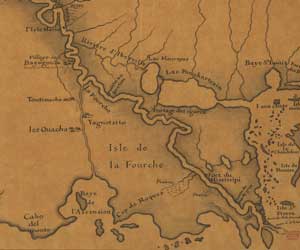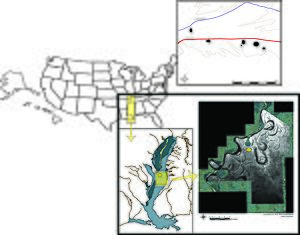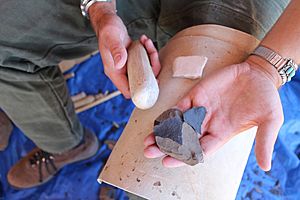Carson Site facts for kids
The Carson Site is an important historical area in Mississippi. It covers about 186 acres in Coahoma County, near the Yazoo River basin. This site is about 300 miles north of the Gulf of Mexico. It helps us learn about early Native American communities in the region.
Contents
A Look Back in Time
The Carson Site is one of the oldest known places where people lived in Mississippi. As archaeologists dug into the ground, they found traces of ancient Native American cities. The Carson Site shows us how early communities started to form. People began living together in one place for safety and to help each other survive. This was a big step in how communities grew and developed.
Who Lived Here?
Native Americans from the St. Louis area traveled down the Mississippi River and settled at the Carson Site. It is believed that the Natchez people lived here before European settlers arrived.
Why Were the Mounds Built?
A key feature of the Carson Site is its many mounds. These mounds show how people learned to use their environment for protection. The mounds had several important uses, especially the larger ones.
- Protection: The biggest mounds helped protect the community from raids and attacks.
- Food Storage: The largest mound also served as a place to store food for everyone.
- Flood Safety: The mounds were built higher than the surrounding land. This was important because the site is close to the Mississippi River, which could flood. Raising the mounds helped protect the people and their homes from rising water.
Exploring the Site
Mapping of the Carson Site began in 1894 by William Henry Morris. He identified seven different parts of the site, including areas labeled A, B, C, D, E, F, and an embankment.
Today, Jayur Metha from Tulane University in New Orleans leads the excavation program. He is an anthropologist, which means he studies human societies and cultures. During the summer, Jayur often brings students from Tulane University to help with the work at the site.
What Archaeologists Found
During their digs, archaeologists had to clear away plants like poison ivy to work safely. Once they did, they found many interesting things. They discovered tools that looked like they were made using a method called flint knapping. This is a way of shaping flint stone into tools or weapons. They also found pots with special designs around their rims. These discoveries help us understand how the people who lived here long ago made their tools and decorated their pottery.
Images for kids





